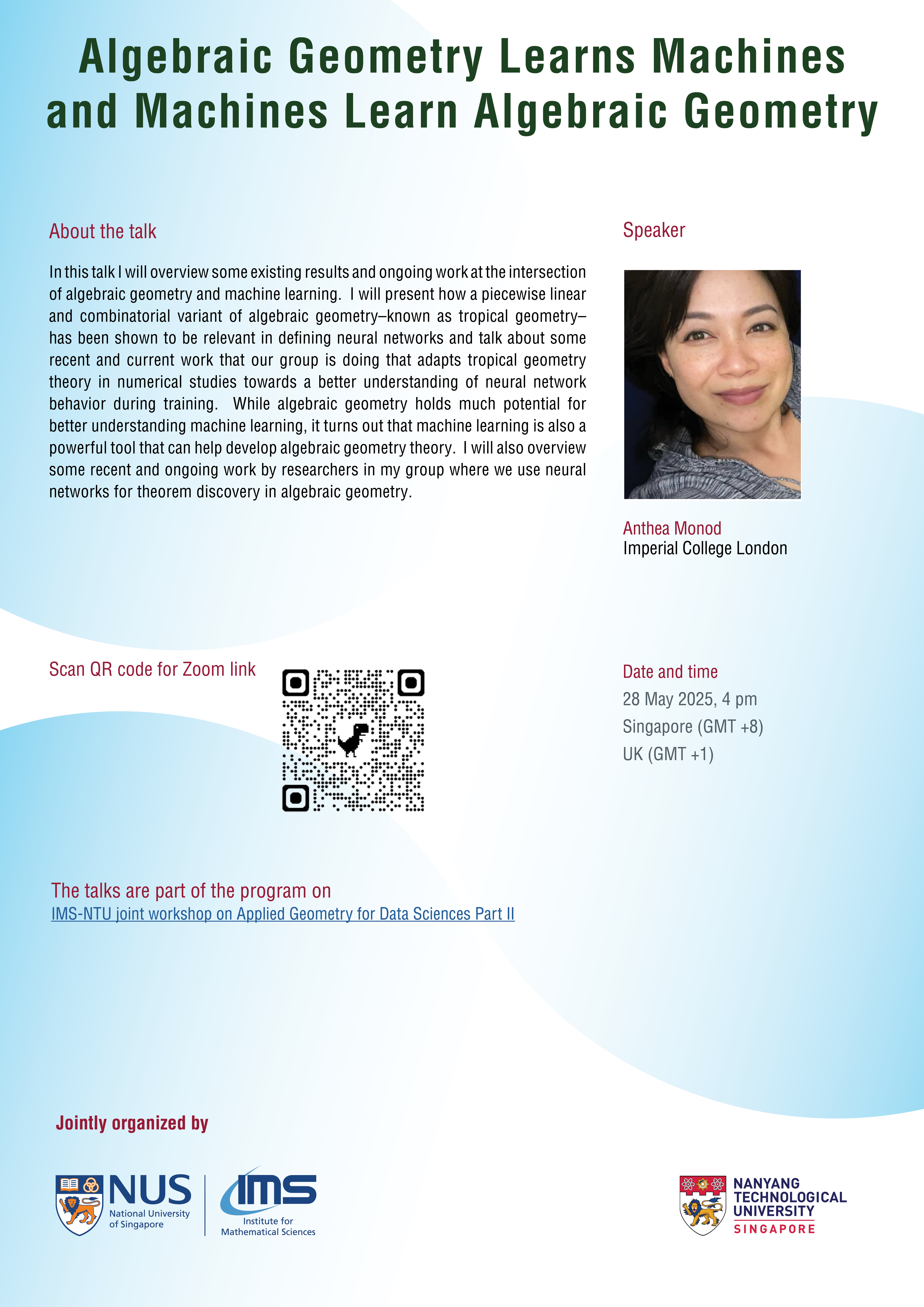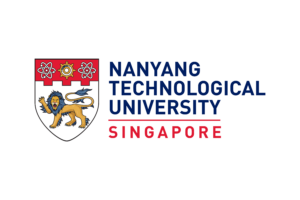Organizing Committee
Co-chairs
- Han Fei (National University of Singapore )
- Wilderich Tuschmann (Karlsruhe Institute of Technology)
- Theodore Papamarkou (Zhejiang Normal University)
- Yuguang Wang (Shanghai Jiao Tong University)
- Kelin Xia (Nanyang Technological University)
- Rex Ying (Yale University)
Overview
This is a continuation of Part One of the program which was held in Year 2024.
As the fourth paradigm, data-driven sciences can fundamentally change sciences and pave the way for a new industrial revolution. The remarkable achievements of AlphaFold models in deciphering protein folding marks a pivotal moment. The amazing performance of ChatGPT and Sora ushers in a new era for AI generated content and opens up a world of opportunities. Despite such strides, the ongoing challenge remains in developing highly efficient data representations and featurization models. Mathematically, computational and discrete geometries are powerful tools for data characterization, representation and modelling. Notably, geometric deep learning has played a pivotal role, elevating the capabilities of learning models to grapple with intricate geometric and topological structures inherent in complex datasets. The synergistic integration of geometric and topological methodologies with learning models holds immense potential to fundamentally reshape the landscape of data sciences.
This workshop aims to combine advanced geometric and topological tools with data-driven learning models. We will cover recent advancements from discrete geometry, computational geometry, geometric data analysis, to geometric and topological deep learning. The topics include but not limited to,
- Discrete Ricci curvatures; Ollivier Ricci curvature; Forman Ricci curvature; Sectional curvature
- Conformal geometry
- Gromov-Hausdorff distance
- Information geometry
- Index theory
- Discrete exterior calculus and its applications; Discrete Laplace Operator; Discrete Optimal Transport; Discrete mapping; Discrete parametric surface
- Geometric flow and applications (Ricci curvature flow, Mean curvature flow, etc)
- Geometric modelling
- Combinatorial Hodge theory; Hodge Laplacian; Discrete Dirac operator
- Dimension reduction (Manifold learning, Isomap, Laplacian eigenmaps, Diffusion maps, UMAP, MAPPER, Hyperbolic geometry, Poincare embedding, etc)
- Geometric signal processing
- Geometric deep learning: Graph neural networks; Weisfeiler Leman graph isomorphism; Graph neural diffusion; PDE-based GNNs; Equivariant GNNs; Clifford GNN
- Topological deep learning: Simplex neural networks; Cellular neural networks; Sheaf neural networks; Quiver neural networks; combinatorial complex neural networks; hypergraph neural networks
- Geometric and topological methods for generalization in neural networks
- Probabilistic geometric and topological neural networks
- Higher-order network datasets
- Hyperbolic geometric graph; Hyperbolic Deep Neural Networks
- Geometric analysis of deep learning; Geometric GAN; Explainable deep learning; Geometric optimal transportation
- Geometric/topological learning models for molecular data from chemistry, biology, and materials
Activities
| Date | Abstract | |
|---|---|---|
| Online talk by Xiaowen Dong (Oxford University, UK) | 27 May 2025, 4.00 pm | N/A |
| Online talk by Anthea Monod (Imperial College, UK) | 28 May 2025, 4.00 pm | N/A |
| Workshop | 2–6 June 2025 | View |
Venue
IMS Executive Seminar Room
Scientific Committee
- David Gu (Stony Brook University, USA)
- Jürgen Jost (Max Planck Institute for Mathematics in the Sciences, Germany)
- Petro Lio (University of Cambridge, UK)
- Kefeng Liu (University of California, Los Angeles, USA)
- Guowei Wei (Michigan State University, USA)




